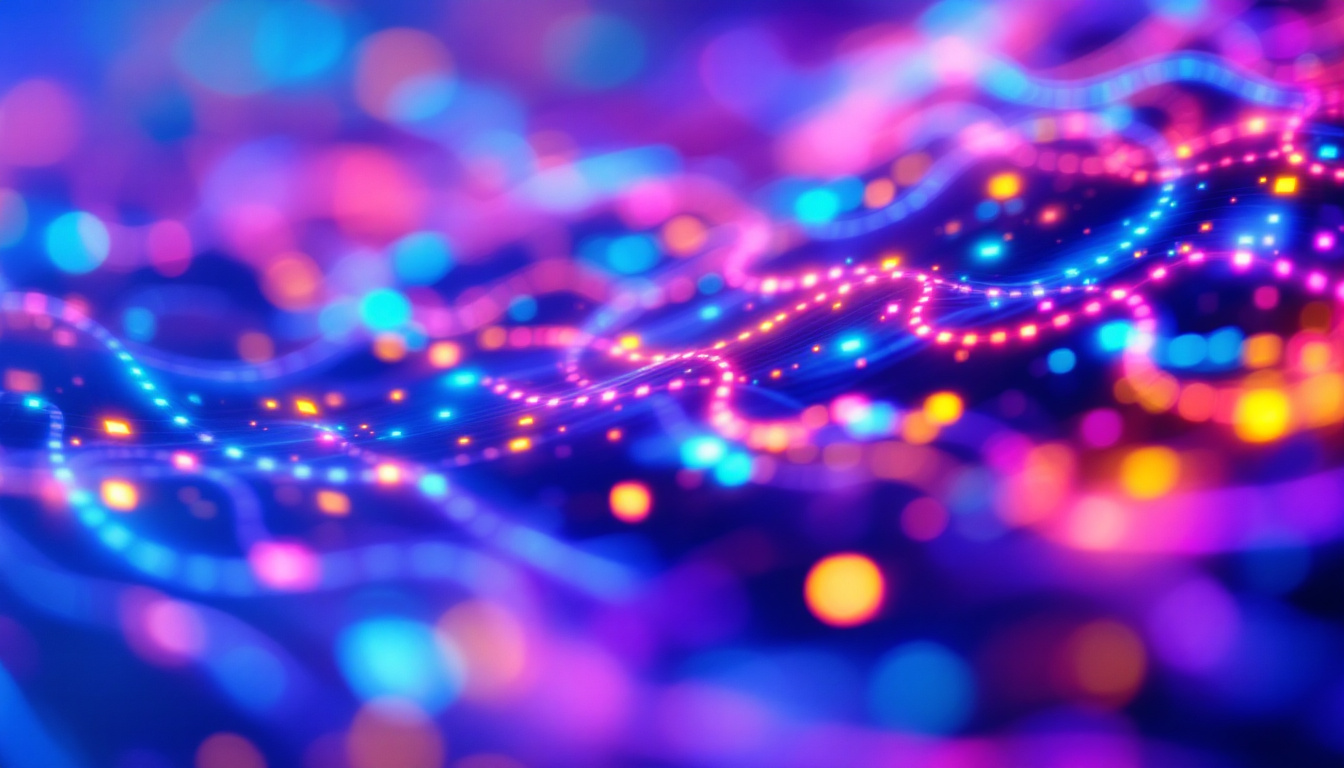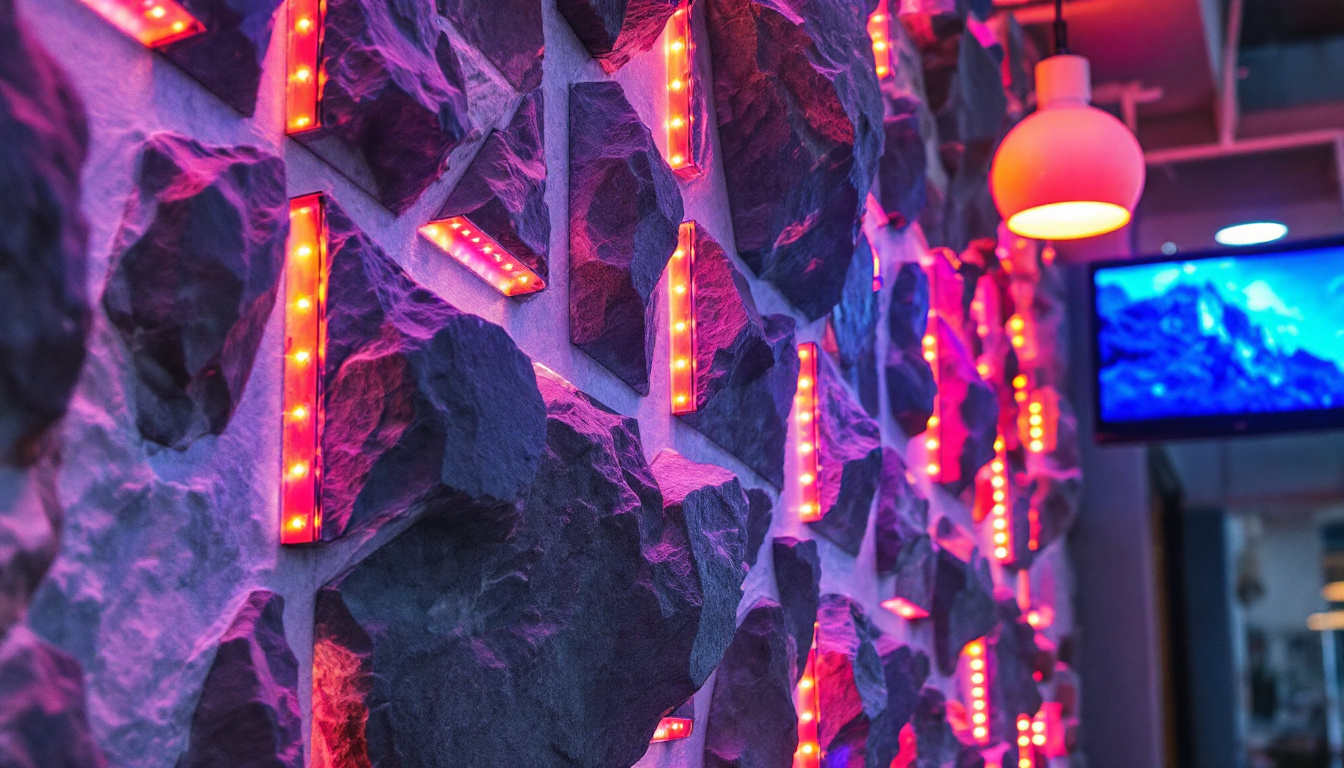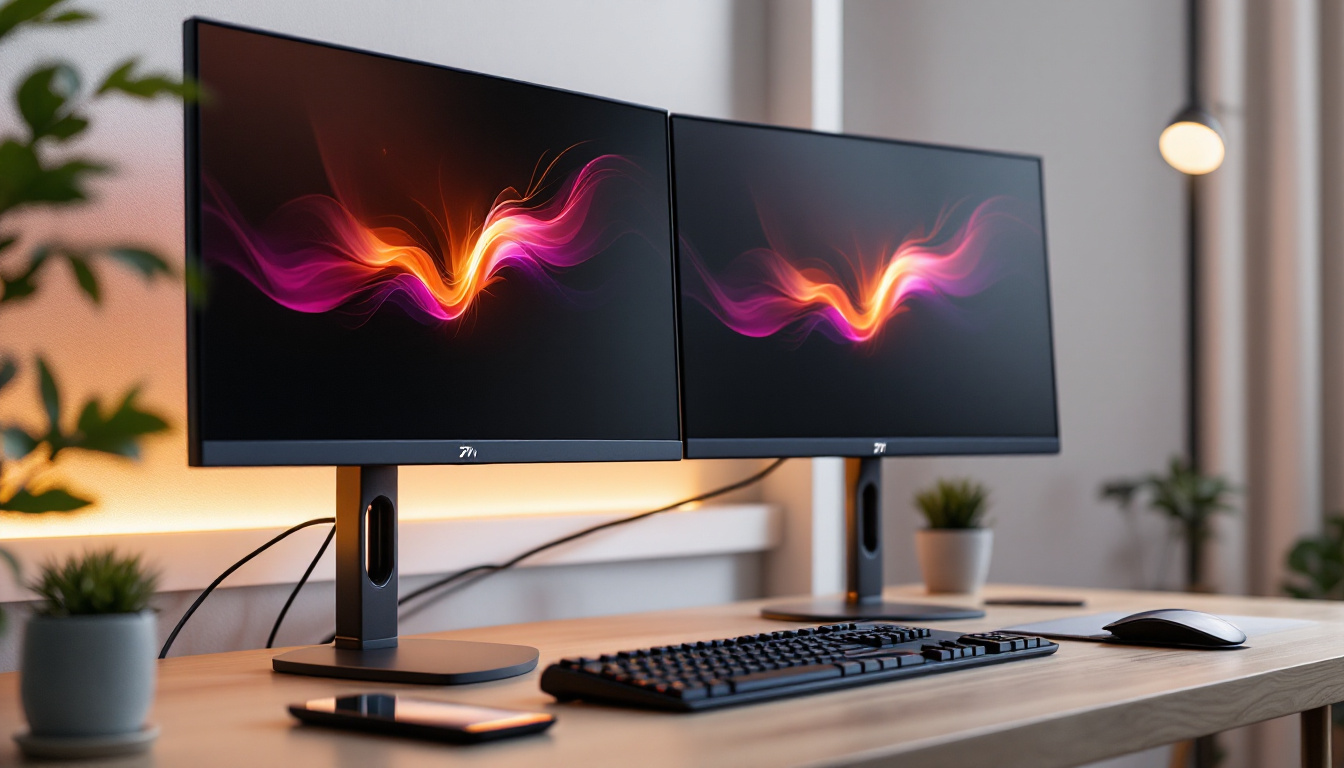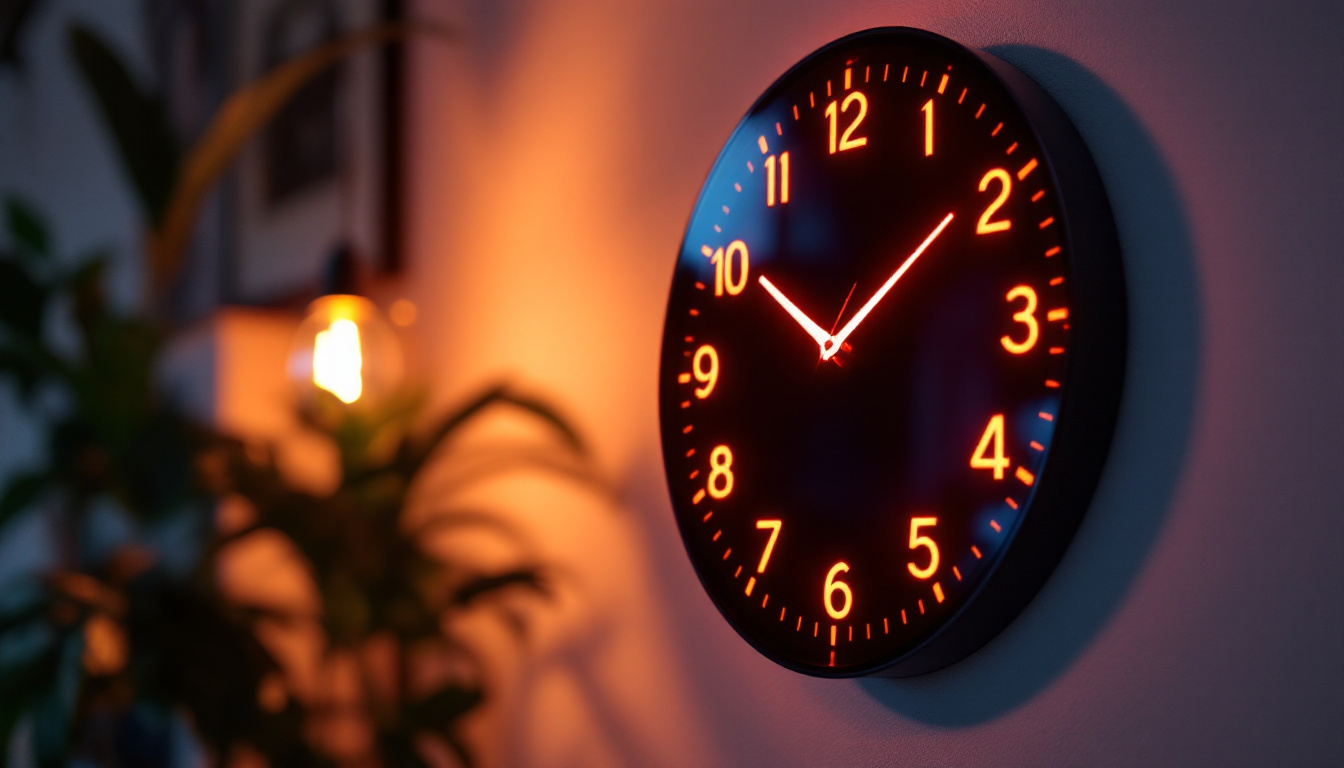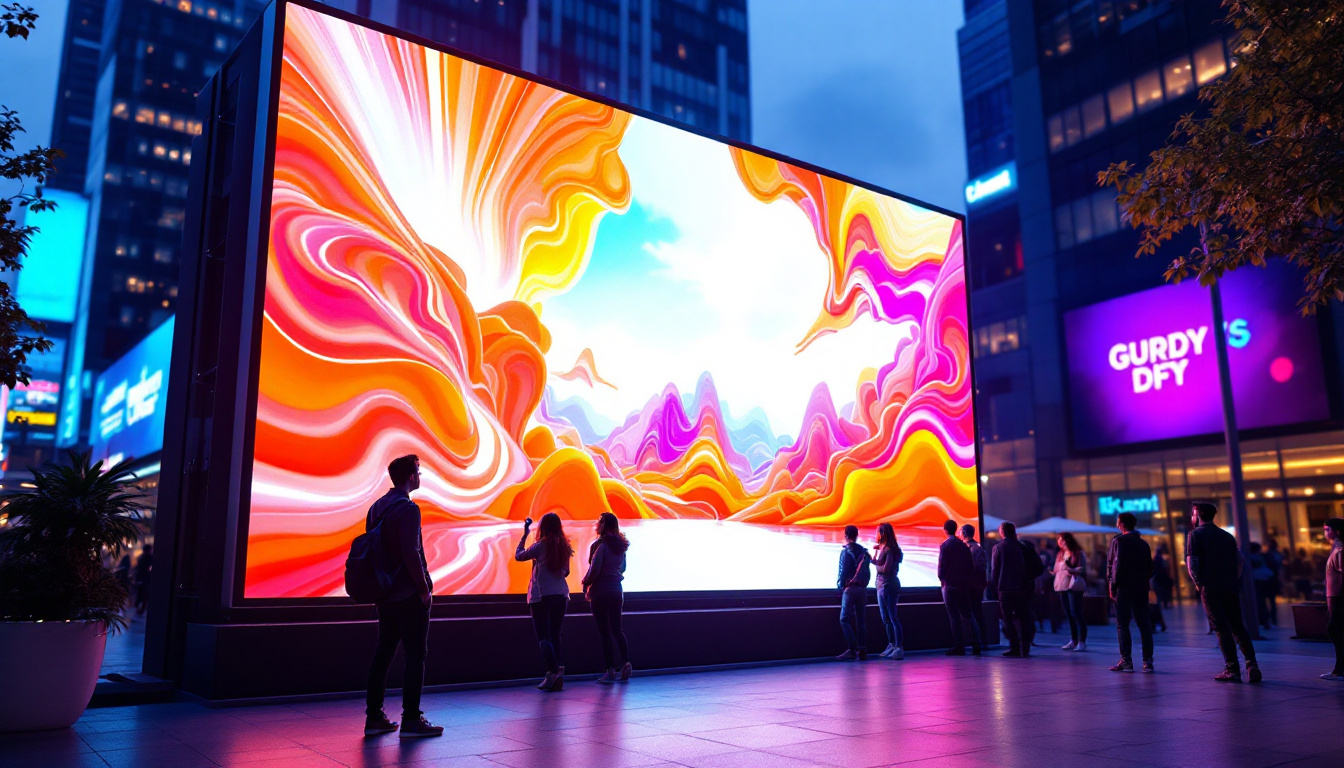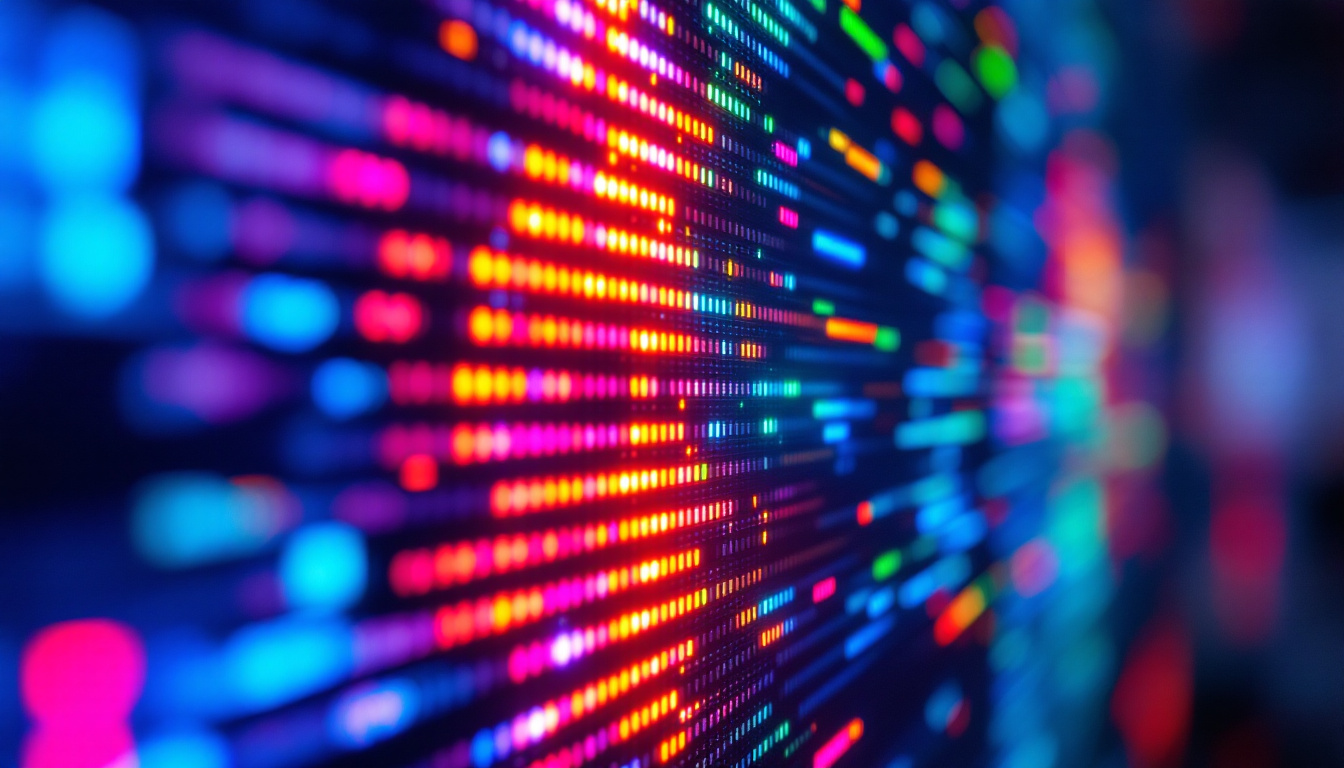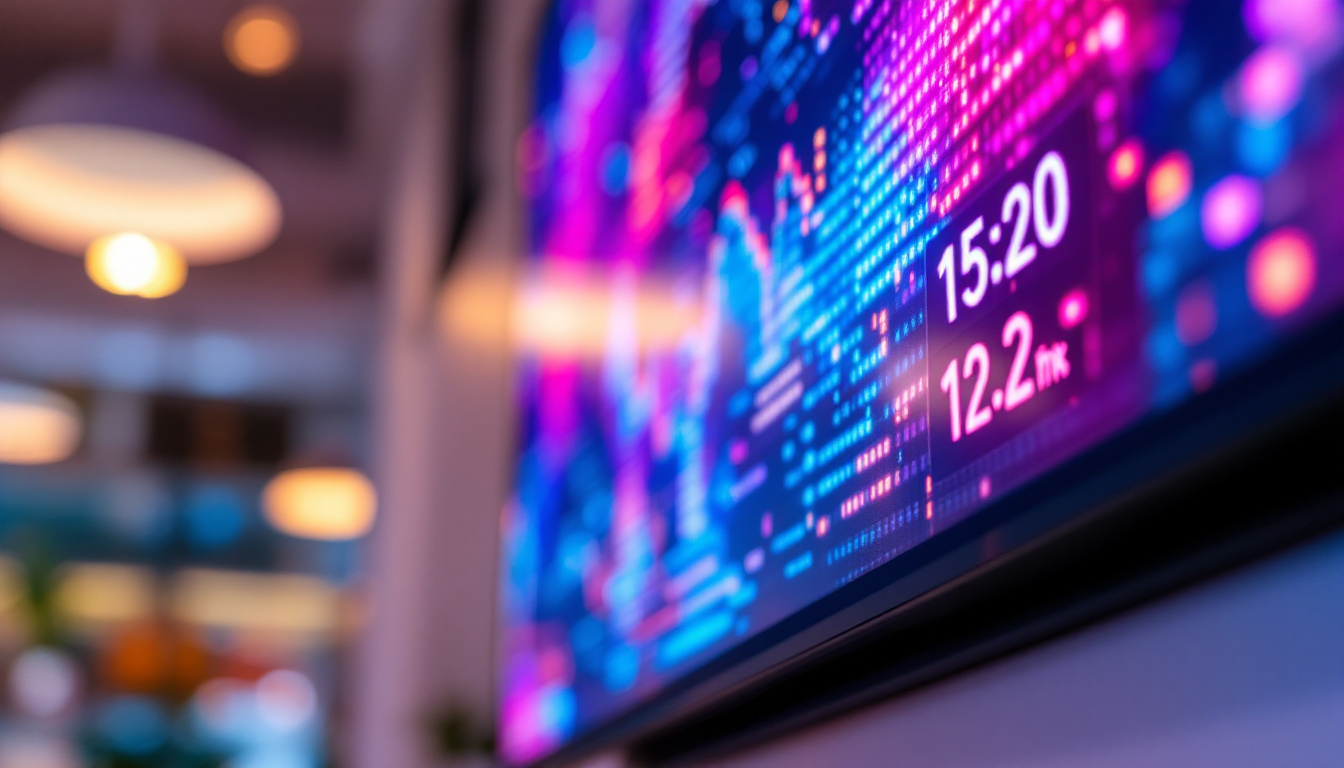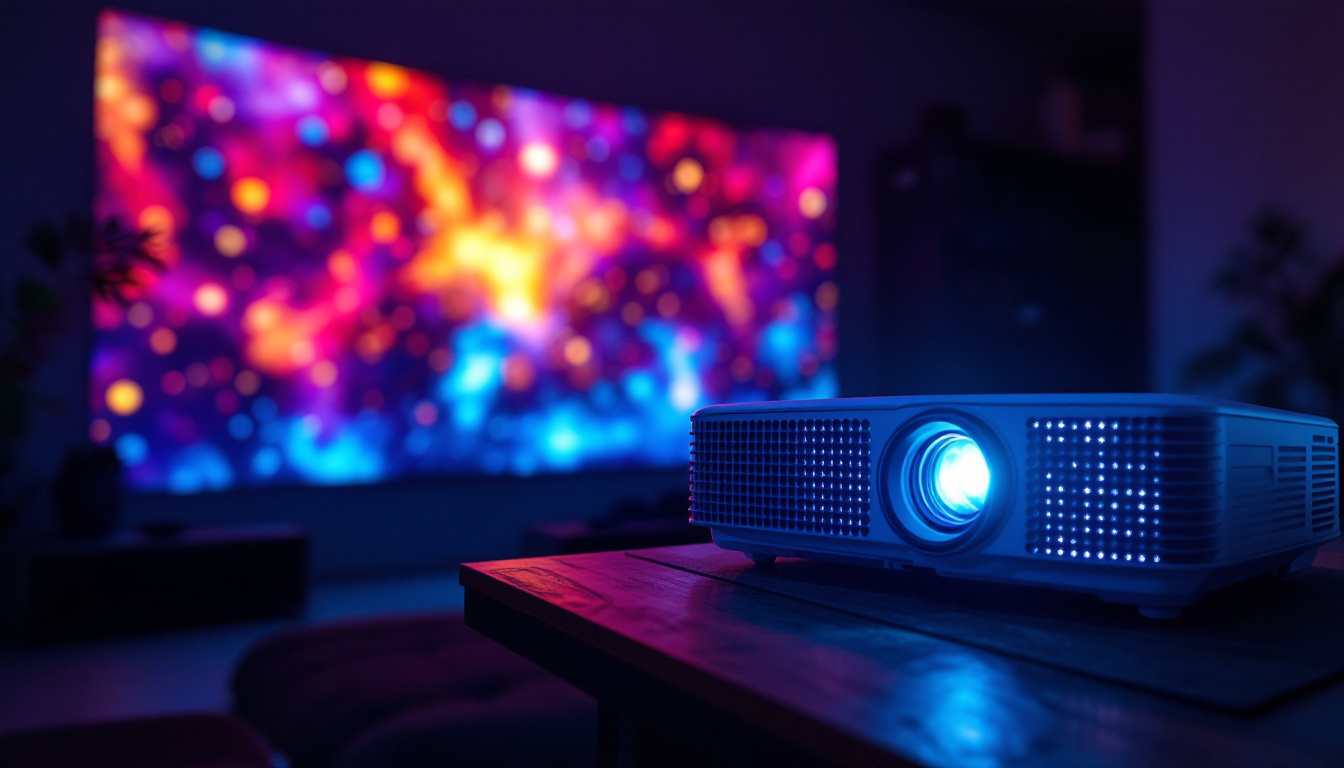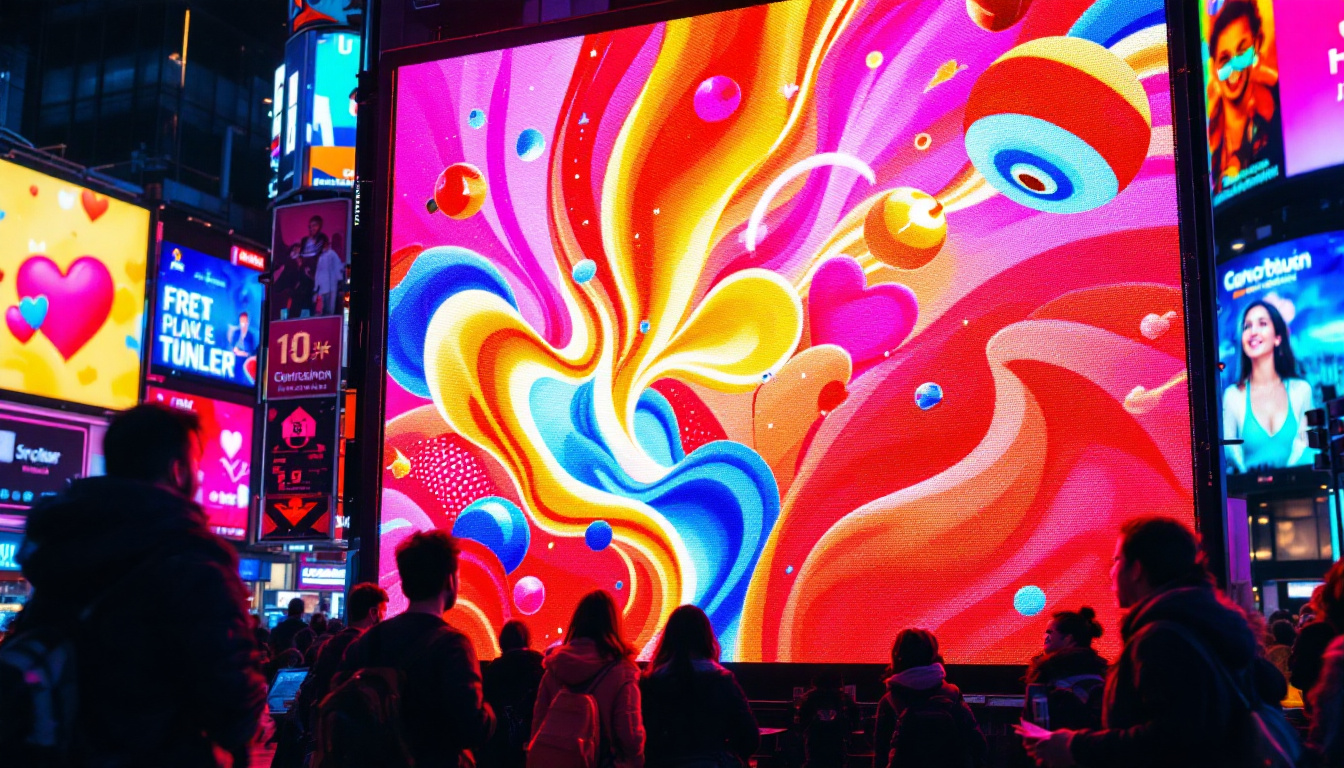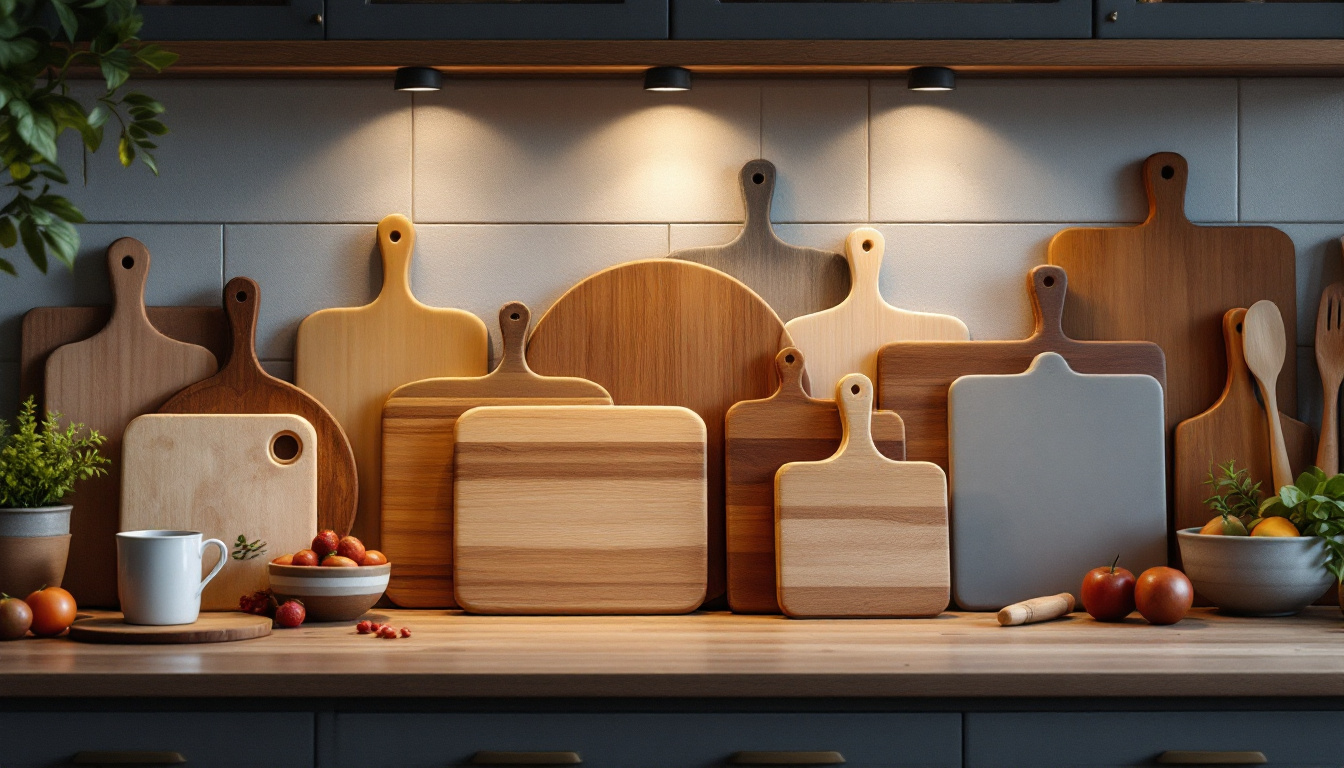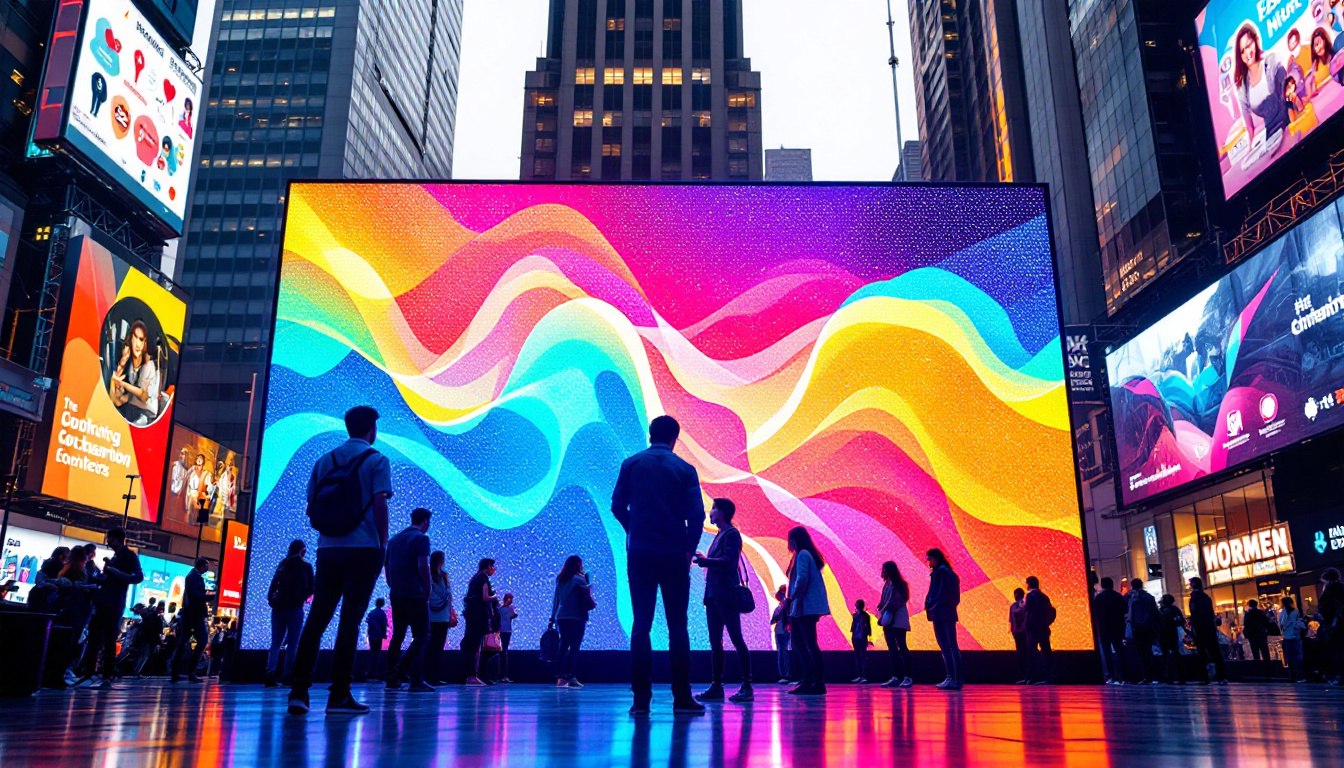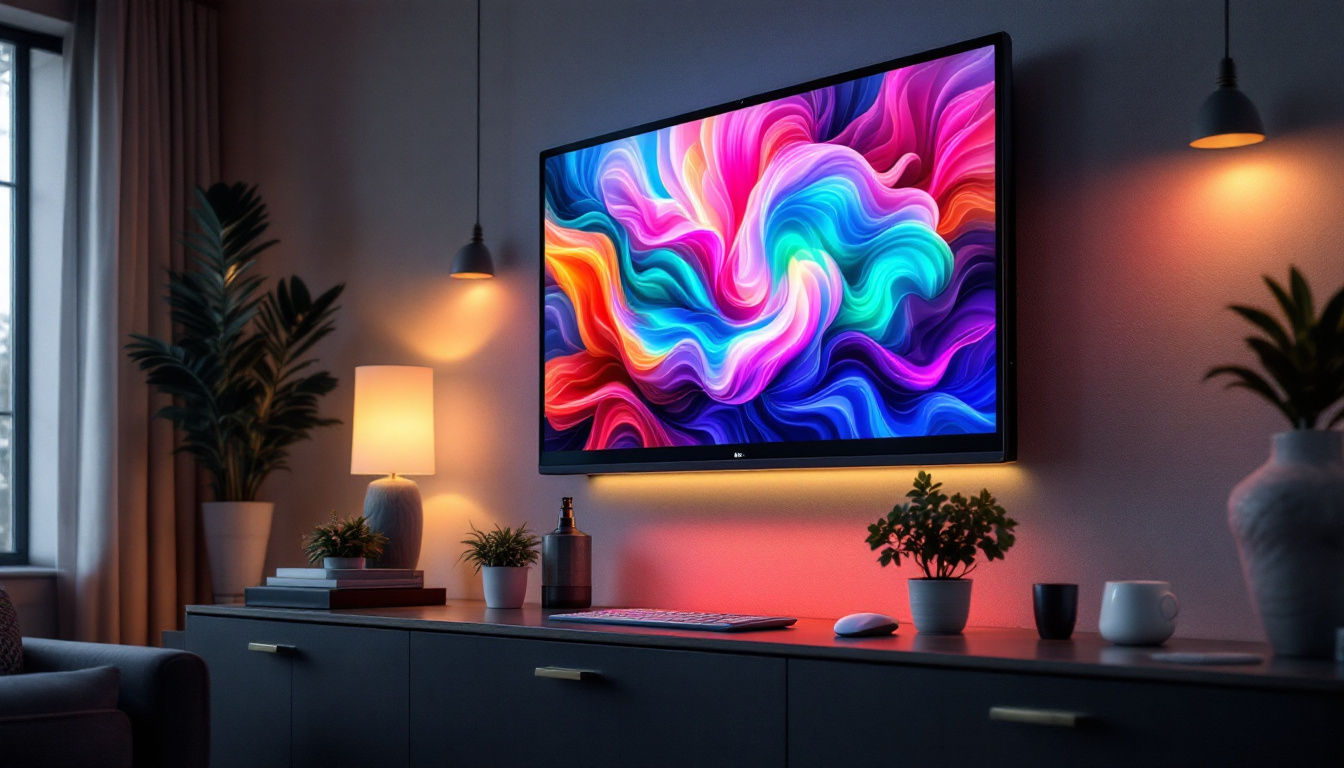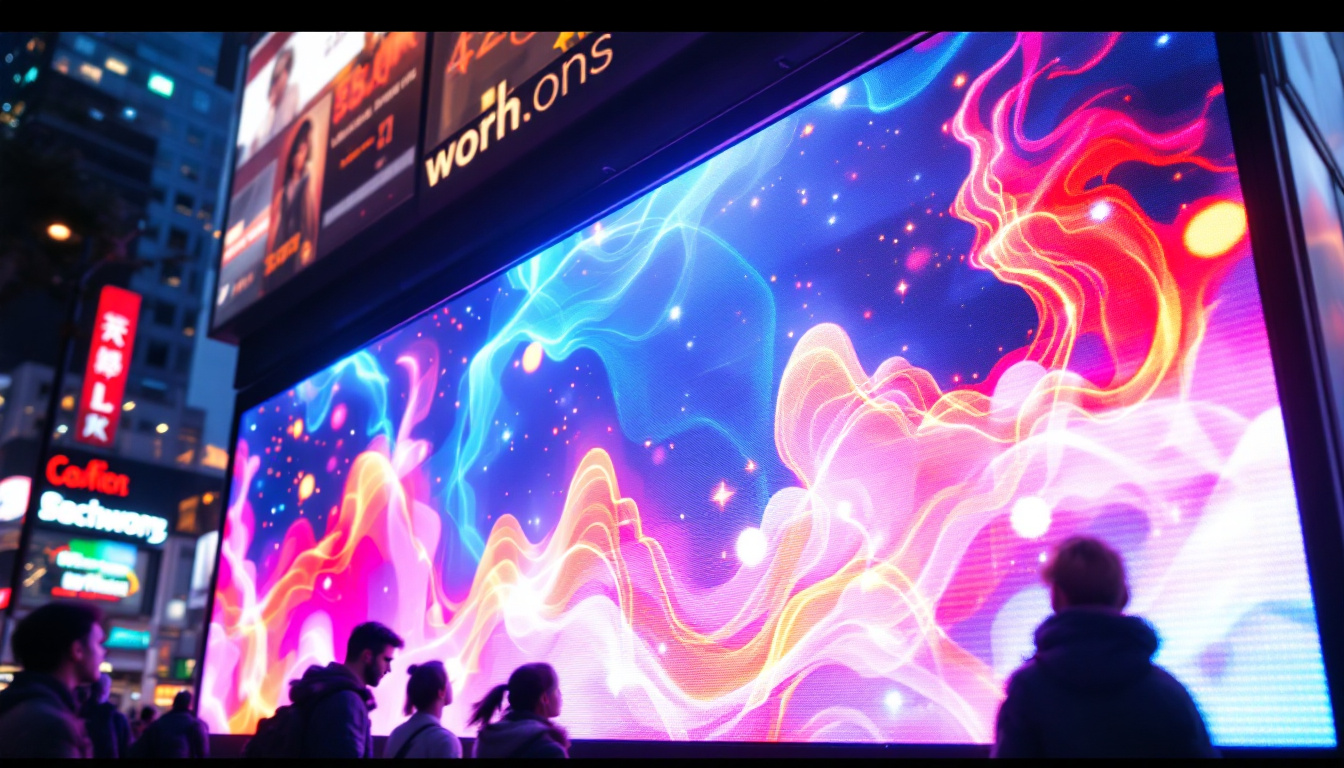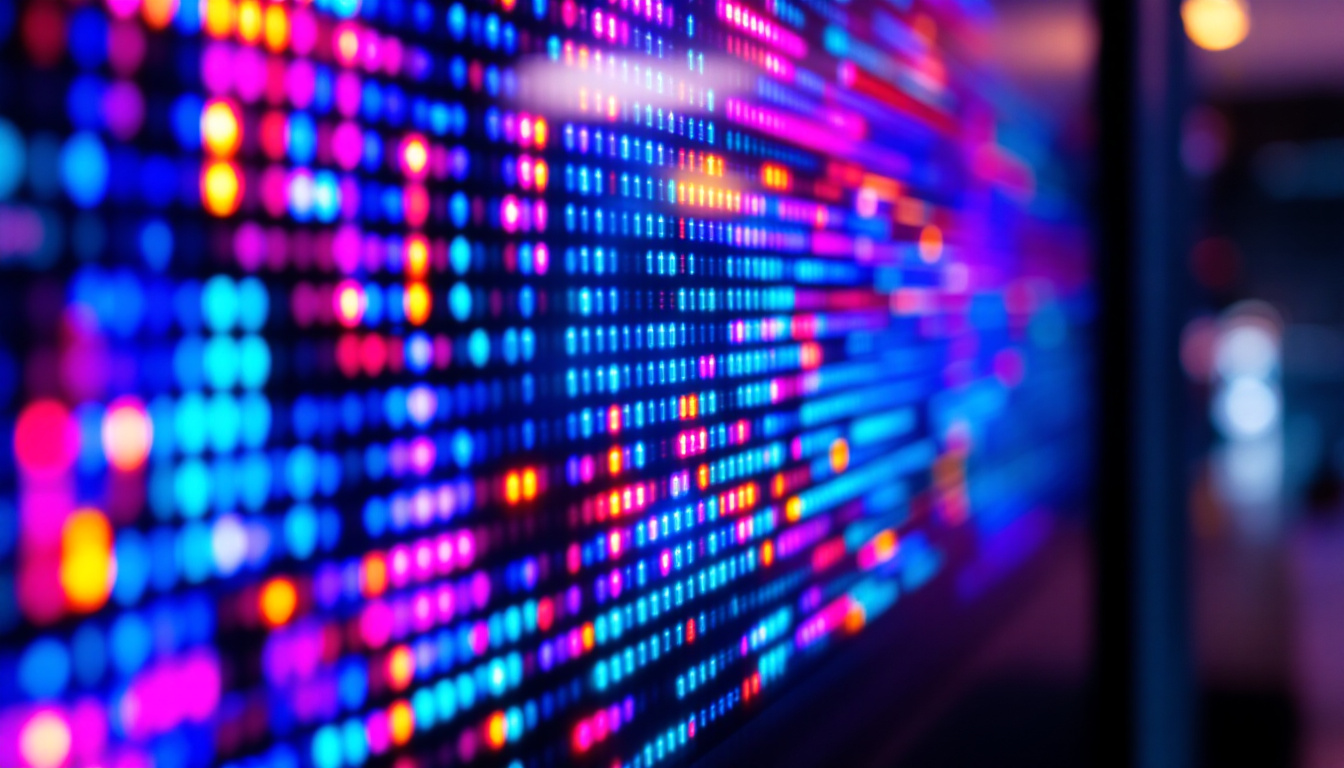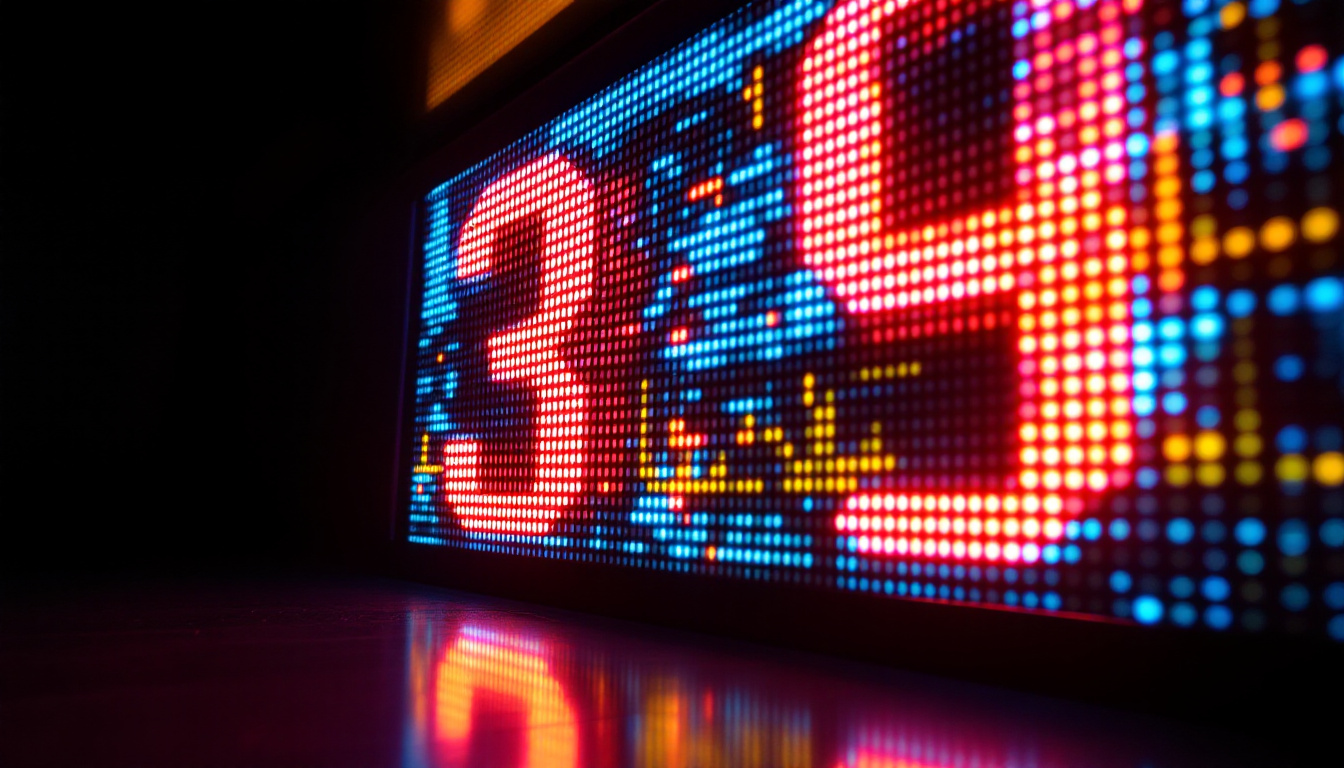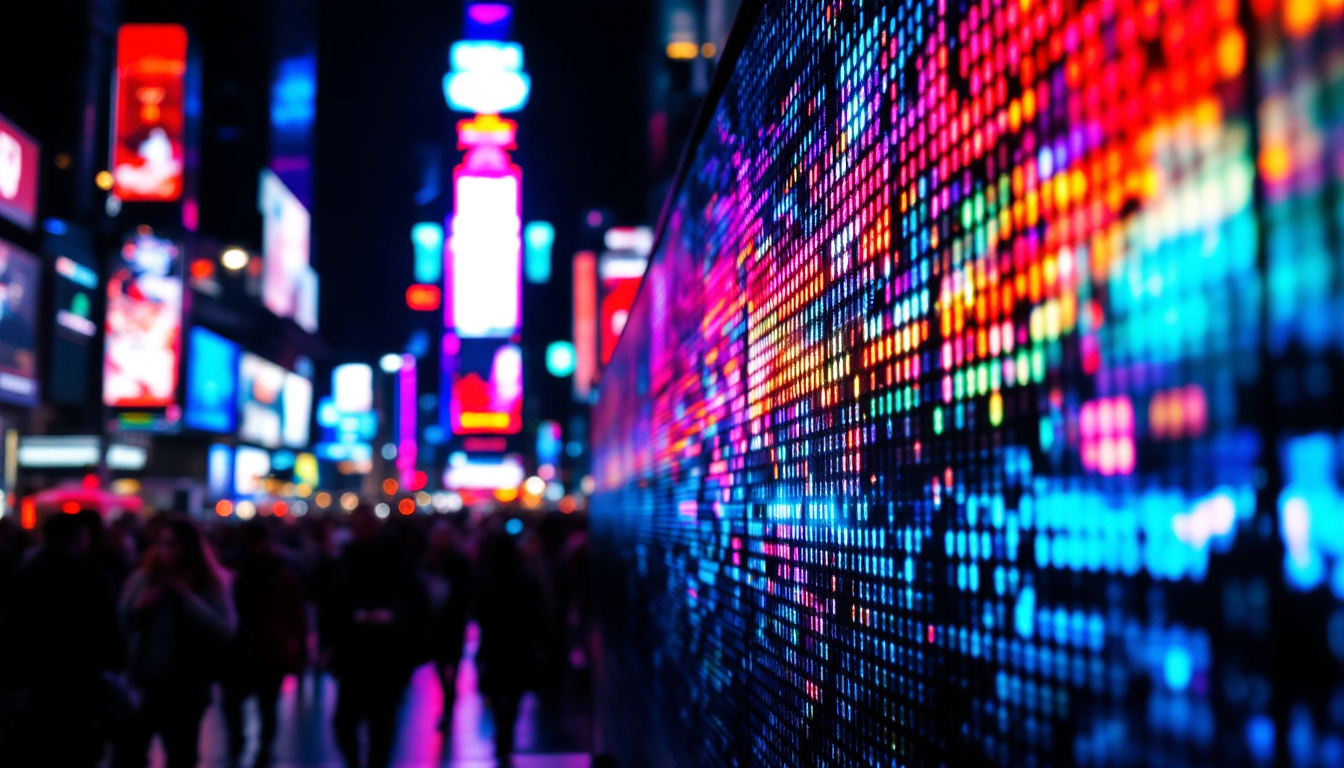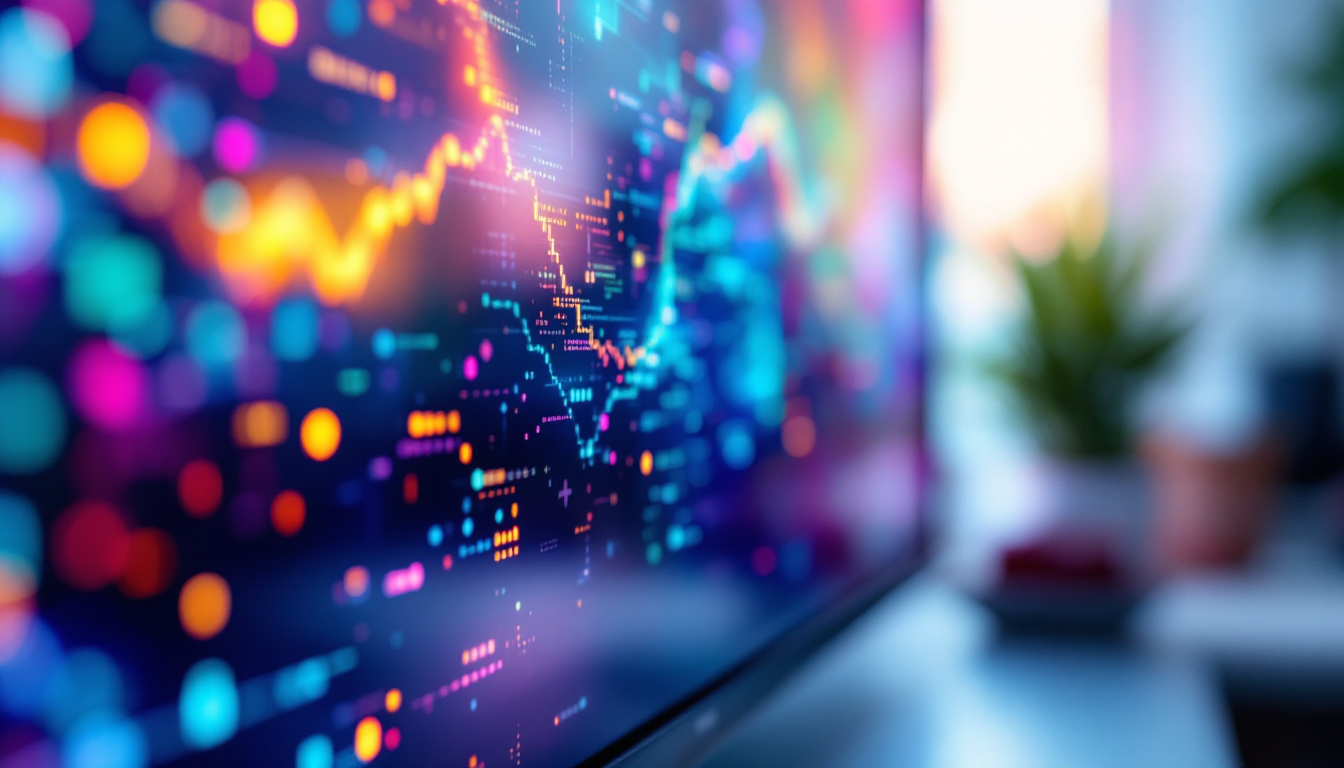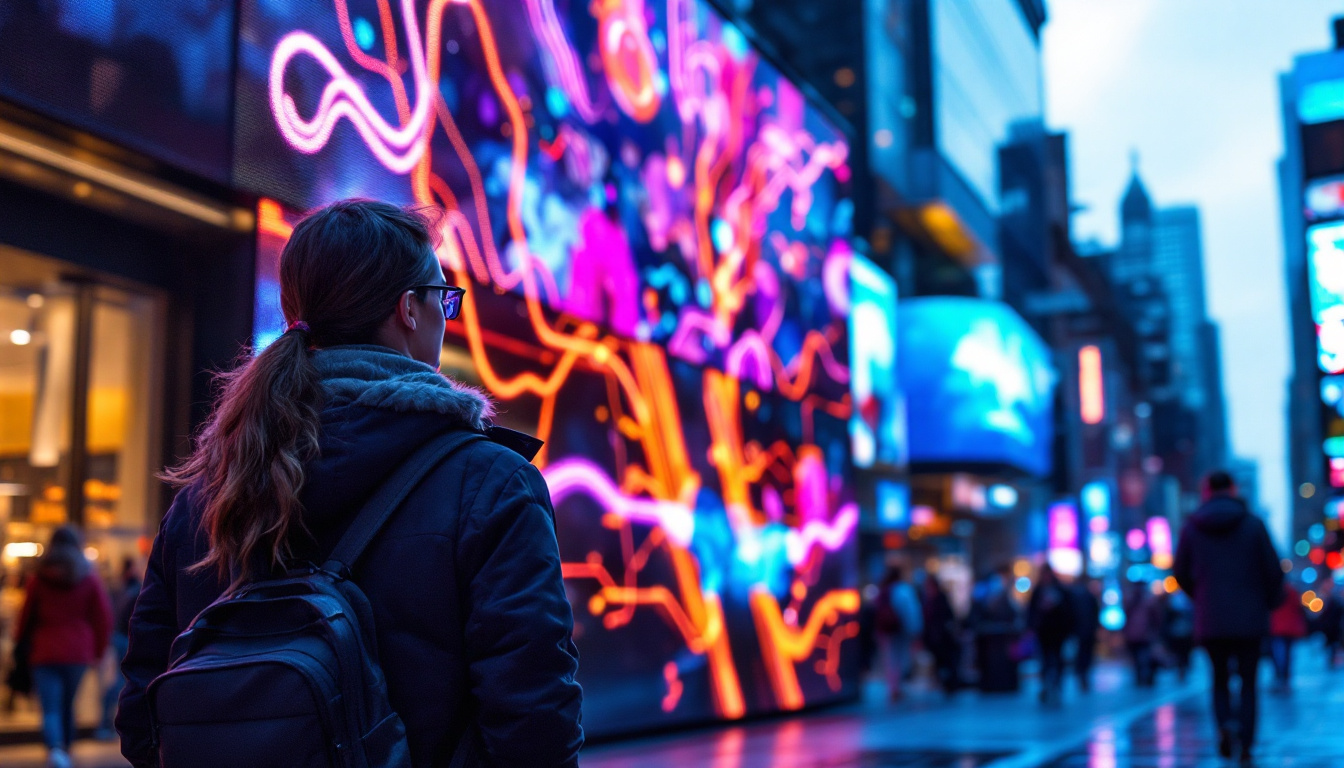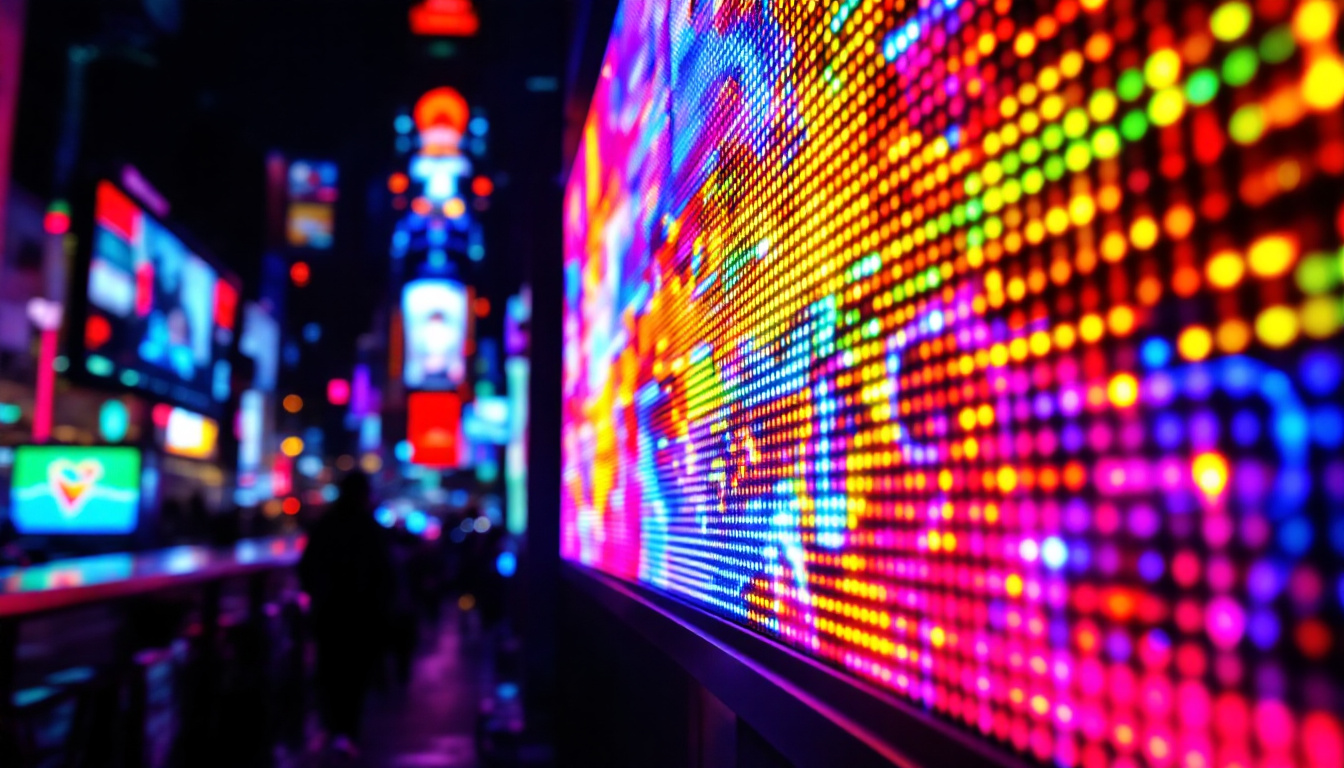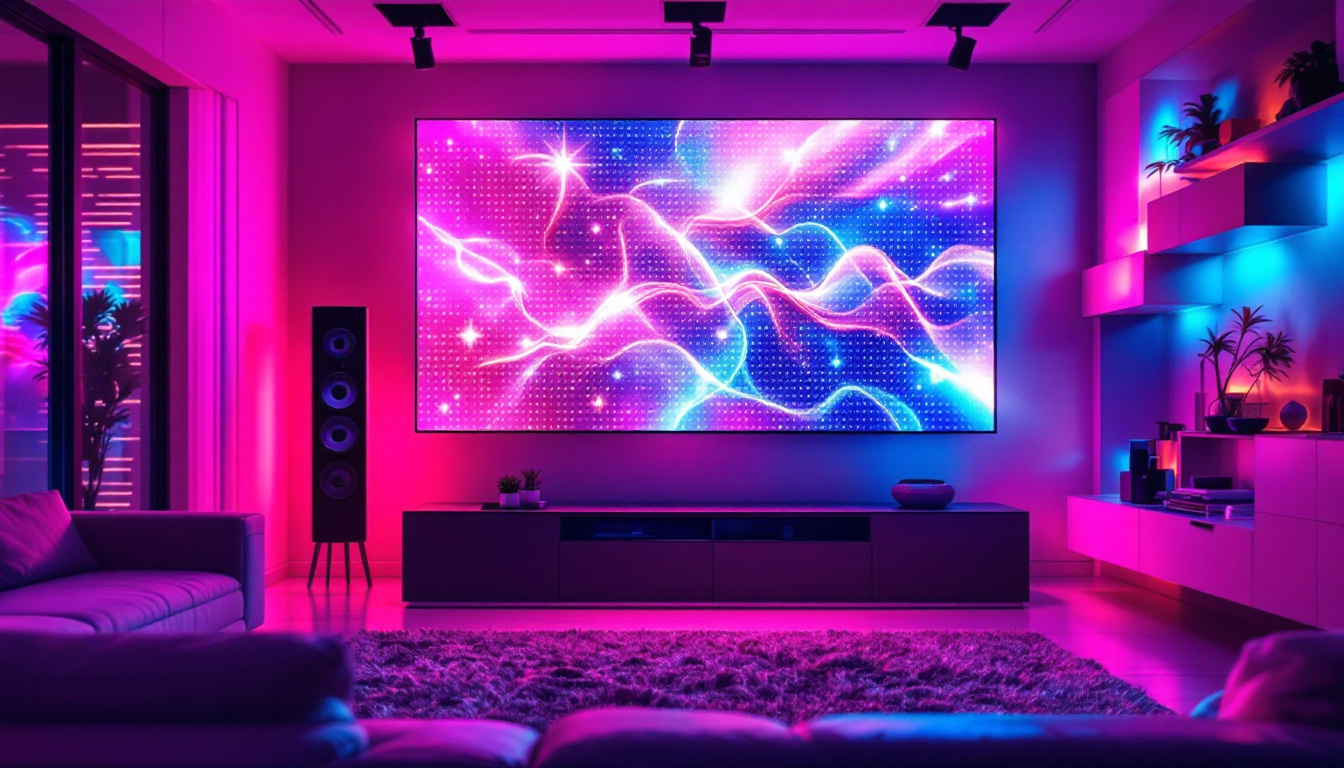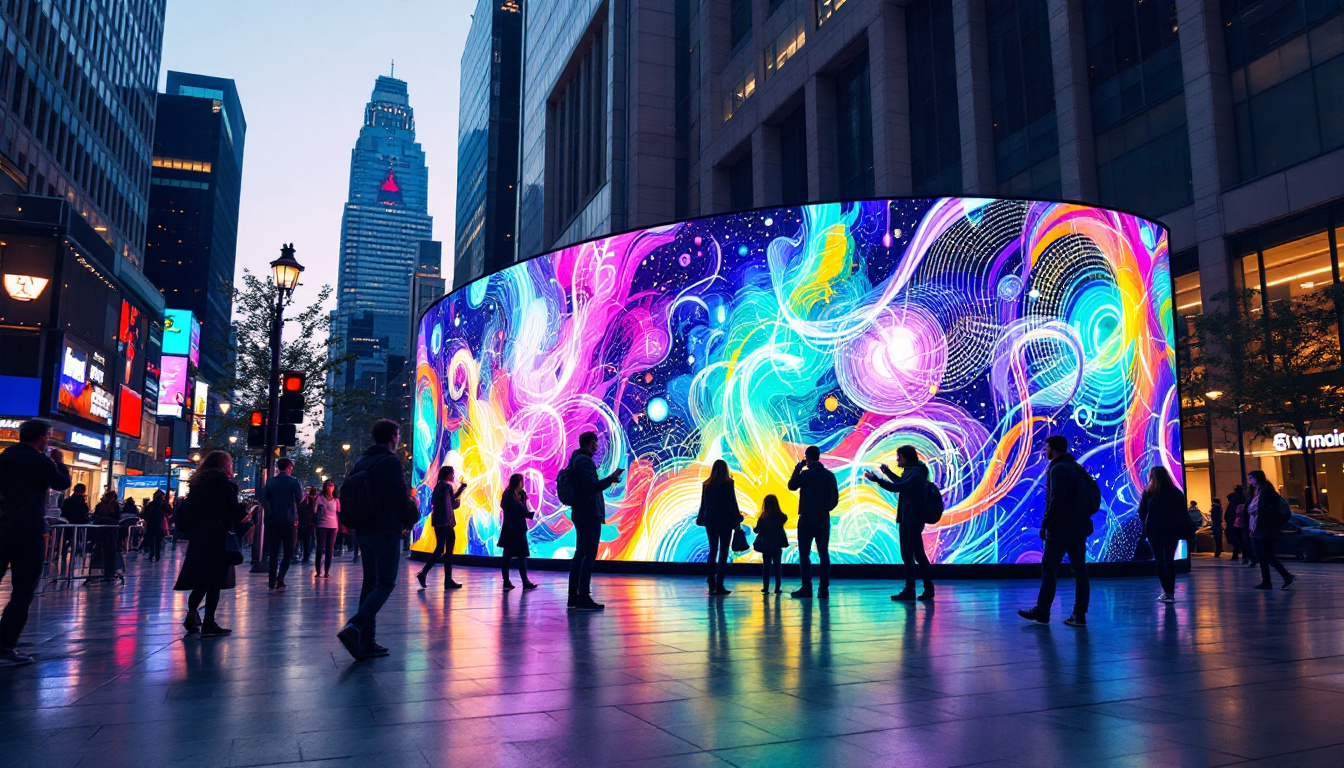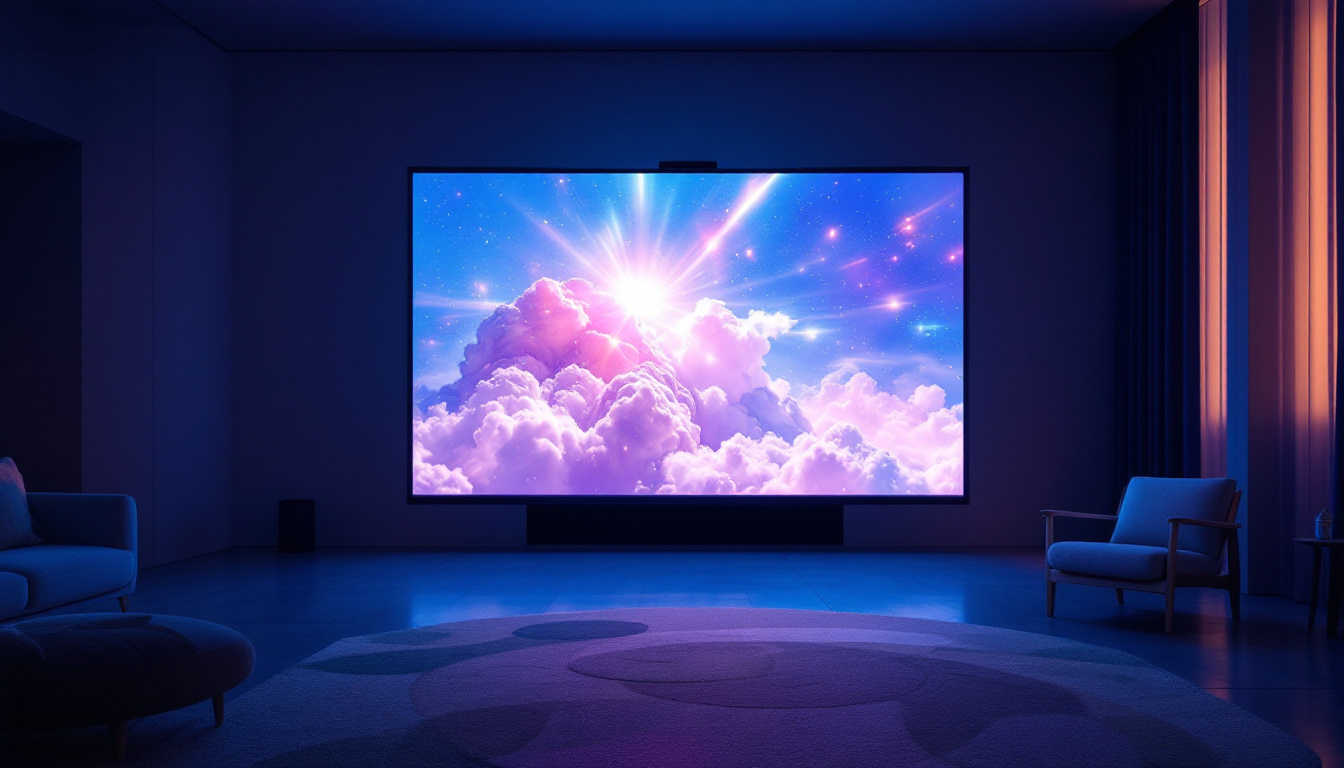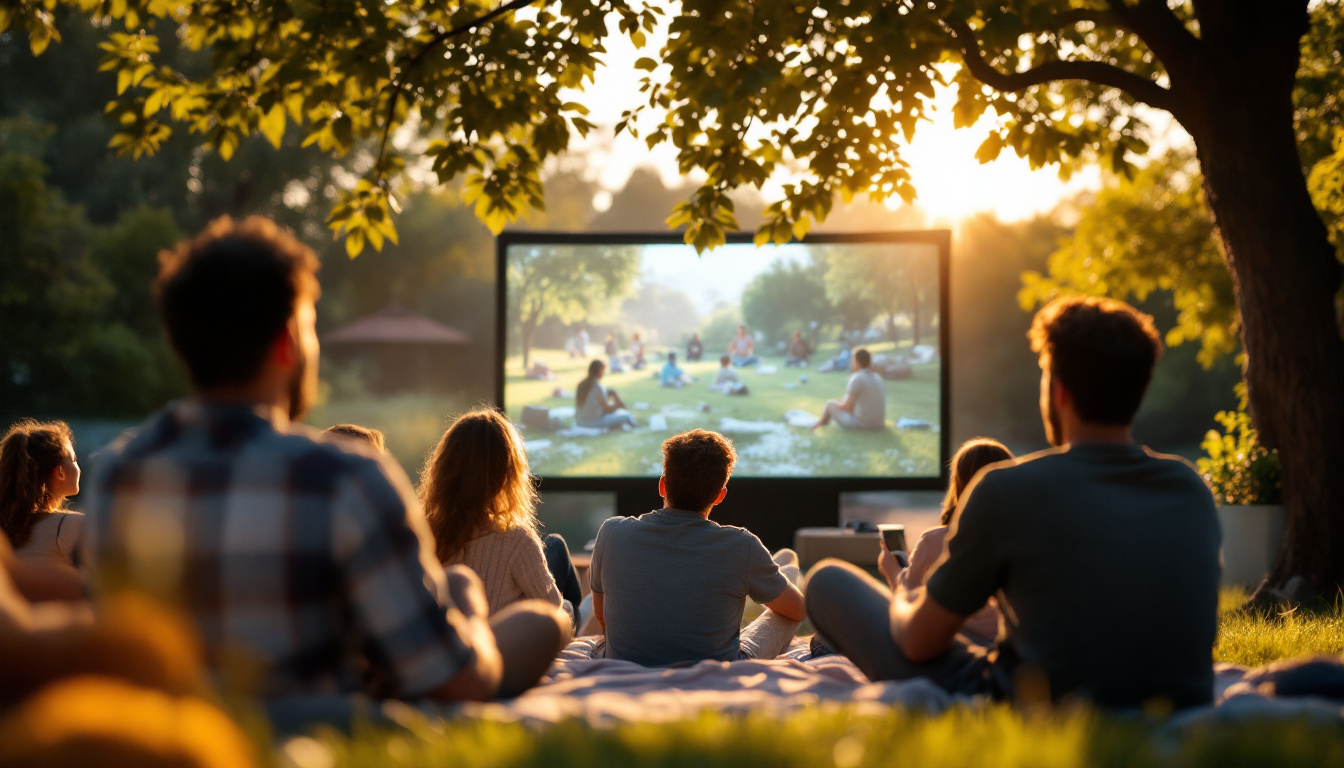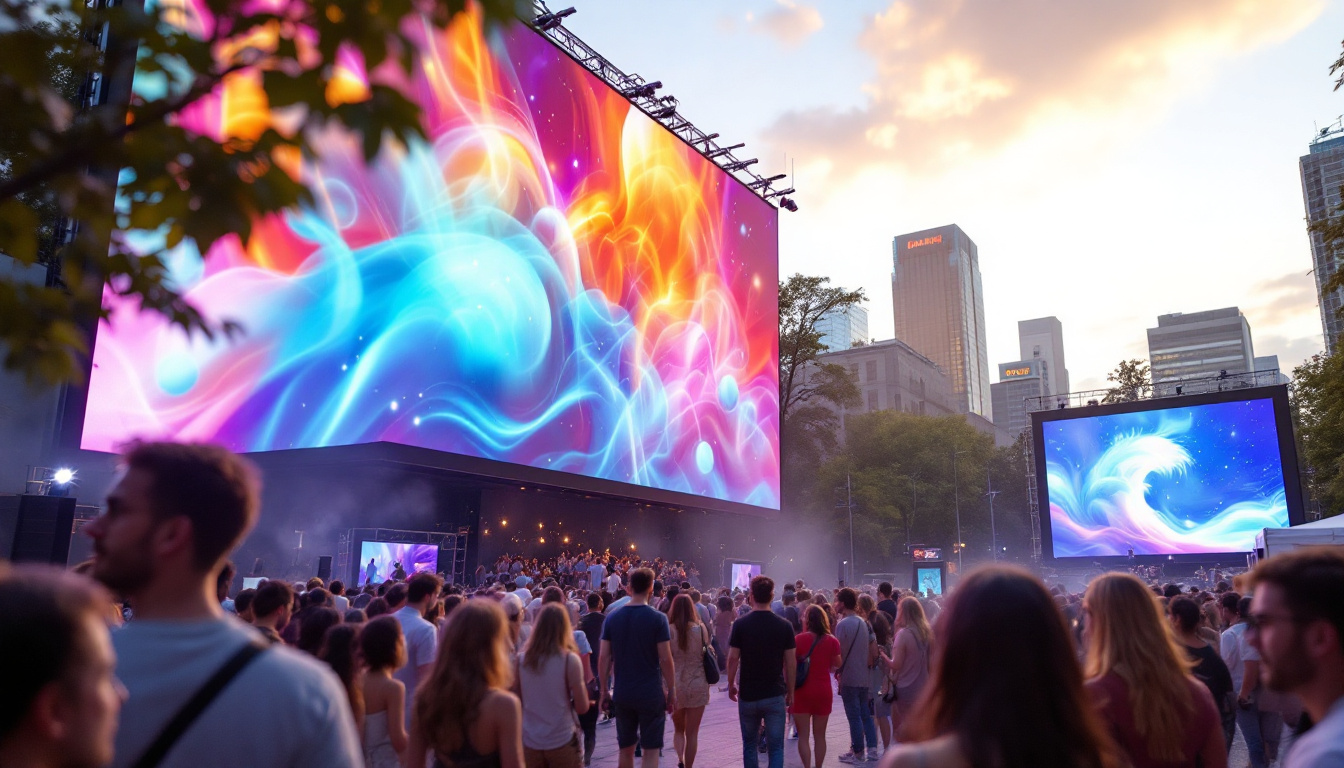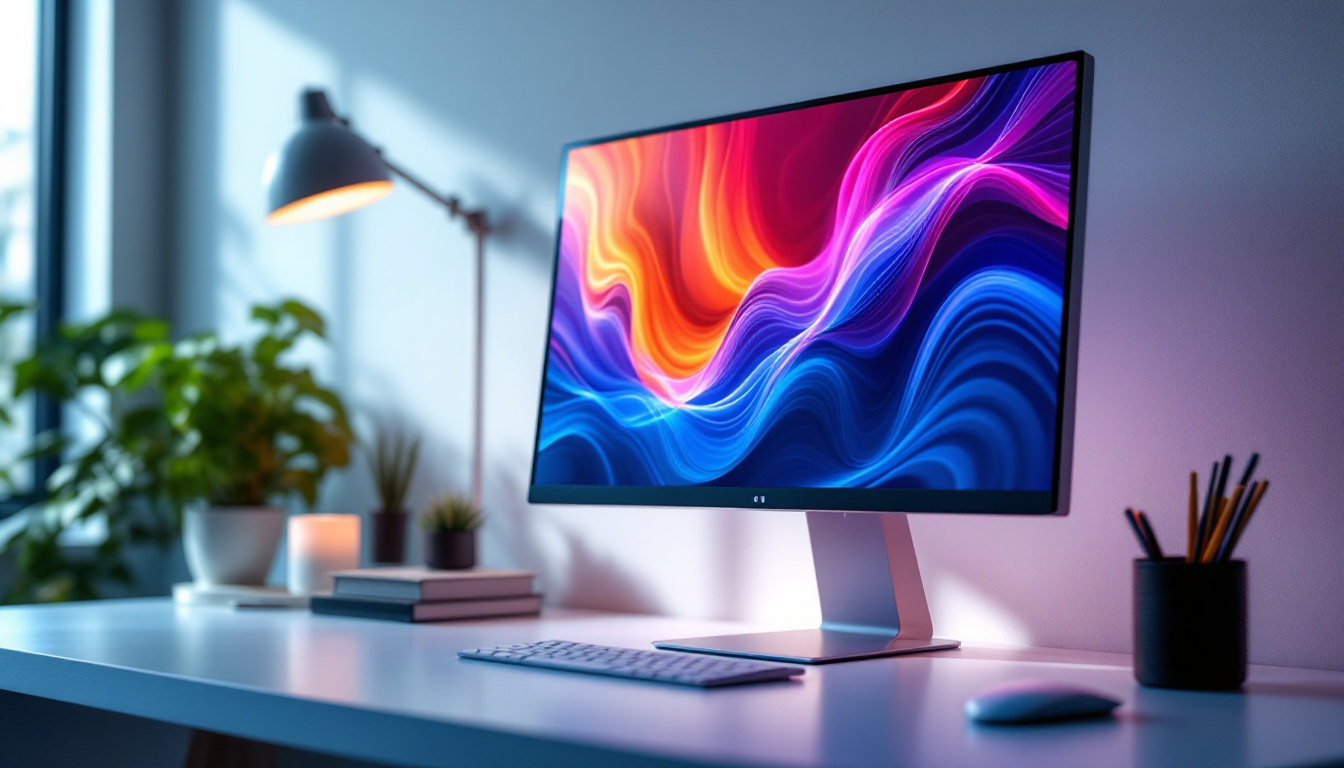In recent years, LED displays have become a staple in both commercial and residential environments. Their vibrant colors, energy efficiency, and versatility have made them a popular choice for everything from advertising billboards to home entertainment systems. However, many users have encountered a perplexing issue: the curvature of their LED displays, often referred to as “PP curved.” This article delves into the reasons behind this phenomenon, exploring the technology behind LED displays and offering solutions for those experiencing this issue.
Understanding LED Displays
Before diving into the specifics of the PP curvature, it’s essential to understand how LED displays work. LED stands for Light Emitting Diode, a technology that utilizes semiconductor materials to emit light when an electric current passes through them. These displays are composed of thousands of tiny LEDs that work together to create images and videos. The arrangement and density of these LEDs can significantly affect the display’s brightness, color accuracy, and overall visual performance. As technology advances, manufacturers continue to innovate, pushing the boundaries of what LED displays can achieve in terms of resolution and energy efficiency.
LED displays can be categorized into two main types: direct view and backlit. Direct view displays, such as those found in televisions and monitors, use individual LEDs to create images. Backlit displays, on the other hand, utilize a panel of LEDs behind an LCD screen to illuminate the image. Understanding these distinctions is crucial for identifying the source of any curvature issues. Moreover, the choice between direct view and backlit can impact not only the visual quality but also the application suitability, as direct view displays are often preferred for high-end applications where color fidelity and contrast are paramount.
The Components of LED Displays
LED displays consist of several key components, each playing a vital role in the overall performance of the screen. These include the LED array, the driver circuit, the control system, and the display panel itself. Any irregularities in these components can lead to various display issues, including curvature. The LED array, for instance, is responsible for generating the light, while the driver circuit regulates the power supplied to the LEDs, ensuring consistent brightness across the display. The control system processes the incoming video signals and translates them into the appropriate commands for the LED array, making it a crucial element in maintaining image quality and responsiveness.
Types of LED Technology
There are several types of LED technology, including OLED (Organic Light Emitting Diode), QLED (Quantum Dot LED), and Mini-LED. Each of these technologies has its unique characteristics, advantages, and potential drawbacks. For instance, OLED displays are known for their deep blacks and wide viewing angles, but they can be more susceptible to burn-in and curvature issues compared to traditional LED displays. On the other hand, QLED technology leverages quantum dots to enhance color accuracy and brightness, making it a popular choice for high-performance televisions. Mini-LED, a newer development, utilizes smaller LEDs to provide better control over local dimming, resulting in improved contrast and HDR performance. As consumers become more discerning, understanding these technologies becomes essential for making informed purchasing decisions.
What Is PP Curvature?
PP curvature refers to the phenomenon where the display appears to be curved or distorted, affecting the overall viewing experience. This curvature can manifest in various ways, such as uneven brightness, warping of images, or a general lack of clarity. Understanding the causes of PP curvature is essential for addressing the problem effectively.
Common Causes of PP Curvature
There are several factors that can contribute to PP curvature in LED displays. These include manufacturing defects, improper installation, environmental conditions, and even user handling. Each of these elements can lead to the display not functioning as intended, resulting in a curved appearance.
Manufacturing Defects
One of the most common causes of PP curvature is manufacturing defects. During the production process, slight imperfections can occur, leading to inconsistencies in the display panel. These defects can result in uneven pixel alignment, which may cause the display to appear curved or distorted. Quality control measures are crucial in minimizing these issues, but they can still occur, especially in lower-end models.
Furthermore, the materials used in the manufacturing process play a significant role in the integrity of the display. For instance, the type of glass or plastic used for the screen can influence its susceptibility to bending or warping under pressure. Additionally, the adhesive used to bond layers of the display can also affect its overall flatness. If the adhesive is unevenly applied, it can create tension that leads to a curved appearance. Manufacturers are constantly researching and developing new materials and techniques to improve the durability and performance of displays, but the challenge remains to balance cost and quality.
Environmental Conditions
Another critical factor contributing to PP curvature is environmental conditions. Displays that are exposed to extreme temperatures or humidity can experience physical changes that affect their shape. For instance, high temperatures can cause the materials to expand, while low temperatures can lead to contraction. This fluctuation can result in stress on the display, leading to curvature over time. Moreover, displays that are installed in areas with high levels of dust or pollutants may also suffer from degradation, as these particles can infiltrate the screen and disrupt the internal components.
In addition to temperature and humidity, the placement of the display can significantly impact its performance. Displays that are mounted in direct sunlight may experience uneven heating, leading to localized warping. Similarly, displays that are subjected to vibrations from nearby machinery or foot traffic can also develop curvature issues. Therefore, it is essential for users to consider the environment in which their displays are placed, ensuring they are installed in optimal conditions to minimize the risk of PP curvature.
Environmental Factors
The environment in which an LED display is used can significantly impact its performance. Factors such as temperature, humidity, and exposure to direct sunlight can contribute to curvature issues. For instance, excessive heat can cause the materials used in the display to expand or contract, leading to warping.
Temperature and Humidity
Extreme temperatures can have a detrimental effect on LED displays. High temperatures can cause the internal components to expand, while low temperatures can lead to contraction. Humidity can also play a role; excessive moisture can seep into the display, causing damage and curvature. It is essential to maintain a stable environment to ensure optimal performance of the display.
Direct Sunlight Exposure
Placing an LED display in direct sunlight can lead to overheating, which may exacerbate curvature issues. The heat generated can warp the display materials, resulting in a distorted image. To combat this, it is advisable to position displays in shaded areas or use protective screens to minimize direct exposure to sunlight.
Improper Installation
Another common cause of PP curvature is improper installation. If the display is not mounted correctly, it can lead to uneven pressure on the screen, resulting in warping. Ensuring that the display is securely and evenly mounted is crucial for maintaining its integrity.
Mounting Techniques
When installing an LED display, it is vital to use the appropriate mounting techniques. Wall mounts should be level and securely fastened to prevent any shifting or movement. Additionally, using a mounting bracket that distributes weight evenly can help avoid pressure points that may lead to curvature.
Handling and Transportation
Improper handling during transportation can also contribute to curvature issues. Displays should be transported in their original packaging and handled with care to avoid bending or flexing the screen. It is essential to follow the manufacturer’s guidelines for installation and handling to prevent damage.
Addressing PP Curvature
For those experiencing PP curvature, there are several steps that can be taken to address the issue. Depending on the cause, solutions may vary from simple adjustments to more complex repairs.
Adjusting Settings
Sometimes, the curvature may not be as severe as it appears. Adjusting the display settings, such as brightness and contrast, can help improve the overall image quality. Additionally, many modern displays come with built-in calibration tools that can assist in correcting minor issues.
Professional Calibration
If adjusting settings does not resolve the issue, seeking professional calibration may be necessary. Professionals can assess the display and make adjustments to ensure optimal performance. This may include recalibrating the color settings, adjusting the alignment of pixels, or even repairing any underlying issues that may be contributing to the curvature.
Replacement Options
In cases where the curvature is severe and cannot be corrected, replacement may be the only option. This is particularly true for displays that are still under warranty. Contacting the manufacturer or retailer for support can help determine the best course of action, whether it be repair or replacement.
Preventing Future Curvature Issues
Preventing PP curvature is essential for maintaining the longevity and performance of LED displays. By following best practices during installation and usage, users can minimize the risk of encountering this issue in the future.
Proper Installation Techniques
As previously mentioned, proper installation is crucial. Ensuring that displays are mounted securely and evenly can prevent curvature from occurring. It is advisable to follow the manufacturer’s installation guidelines closely and to use professional services if needed.
Environmental Considerations
Maintaining a stable environment is also vital. Keeping LED displays in temperature-controlled areas and away from direct sunlight can help prevent damage. Additionally, using protective covers or screens can provide an extra layer of defense against environmental factors.
Conclusion
PP curvature in LED displays can be a frustrating issue for users, but understanding its causes and solutions can help mitigate the problem. By recognizing the factors that contribute to curvature—such as manufacturing defects, environmental conditions, and improper installation—users can take proactive steps to ensure their displays function optimally.
Whether adjusting settings, seeking professional help, or taking preventive measures, addressing PP curvature is essential for maintaining the quality of LED displays. With the right knowledge and care, users can enjoy the vibrant visuals that LED technology has to offer without the distraction of curvature issues.
Explore Cutting-Edge LED Solutions with LumenMatrix
If you’re looking to prevent PP curvature and enhance your visual experience, LumenMatrix has the perfect solution. As a leader in LED display technology, we offer an extensive range of innovative products designed to meet your specific needs. From Indoor and Outdoor LED Wall Displays to specialized options like Vehicle, Sports, and Floor LED Displays, our mission is to revolutionize your visual communication. Experience the difference with our Custom, All-in-One, and Transparent LED Displays, and see how we can help you captivate your audience. Check out LumenMatrix LED Display Solutions today and take the first step towards a clearer, more engaging visual future.

